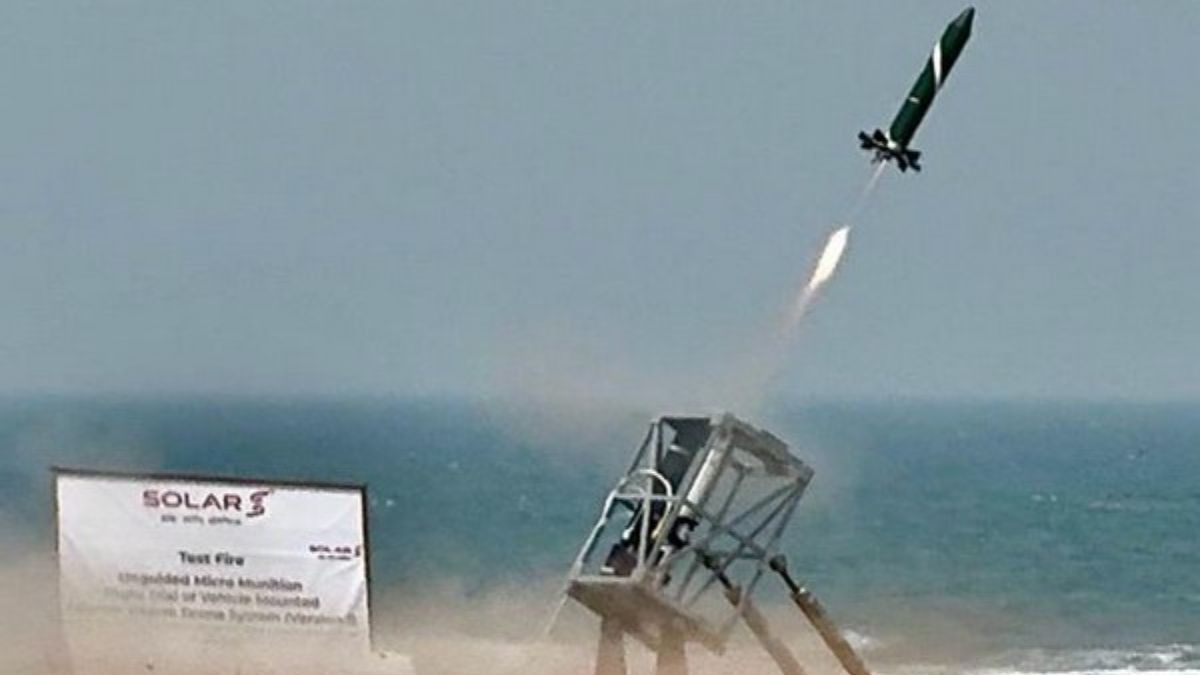India has successfully tested an indigenous counter-drone system. Dubbed ‘Bhargavastra’, the cost-effective system has been created in hard kill mode.
Its micro rockets were test-fired on Tuesday (May 13) at the Seaward Firing Range in Odisha’s coastal town of Gopalpur. The successful launch comes amid heightened tensions between India and Pakistan since the April 22 Pahalgam terror attack that led to the Indian Armed Forces’ Operation Sindoor.
What is this Bhargavastra system and how does it work? Let’s understand.
India’s ‘Bhargavastra’ to counter swarm drones
Designed and developed by Solar Defence and Aerospace Limited (SDAL), Bhargavastra uses minor rockets to detect and neutralise drones at a range of up to 2.5 km.
Three trials were carried out for the micro rockets in the presence of senior officials of the Army Air Defence (AAD) on Tuesday. Of this, two trials were conducted by launching one rocket each. In another trial, a salvo of two rockets was fired within two seconds.
All four rockets met the required launch parameters, highlighting the system’s innovative technology to counter large-scale drone attacks.
“The micro rockets used in this counter-drone system underwent rigorous testing at the Seaward Firing Range, Gopalpur, achieving all designated objectives,” SADL said in a statement.
How Bhargavastra works
The Bhargavastra system deploys unguided micro rockets to neutralise swarms of drones with a lethal radius of 20 metres. The system’s second layer of defence is the guided micro-missile, which ensures precise and effective targeting. It has the capability to fire 64 micro missiles simultaneously.
The counter-drone system can also include an additional soft-kill layer to include jamming and spoofing for integrated protection.
Its radar has a range of 6 to 10 km for locating small aerial threats, reported ANI. As it is a modular system, the sensors and the shooter can be put together as per requirement to provide a layered and tiered air defence (AD) cover, helping in engaging targets at longer ranges.
According to SDAL, its indigenous design and development of rockets and micro-missiles will neutralise hostile unmanned aerial vehicles (UAVs).
The system can also be integrated with the existing network-centric warfare infrastructure. Its electro-optical/infrared (EO/IR) sensor suite ensures accurate identification of low radar cross-section targets.
The counter-drone system can be stationed across diverse terrains, including high-altitude regions of 5,000 metres and above from sea level, addressing the unique demands of India’s Armed Forces.
ALSO READ: What is S-400 and Akash system that India used to foil Pakistan’s drone assault?
Why does it matter?
Bhargavastra is a big leap for India’s counter-drone technology.
“The Bhargavastra system uses micro rockets to eliminate drone targets and is designed to respond swiftly to large-scale drone threats. The performance of the mini rockets used in this counter-drone system was excellent. It is a strategic leap in counter-drone warfare,” SDAL sources told The New Indian Express (TNIE).
The system is a boost to the government’s “Make in India” policy, adding to India’s defence capabilities.
The rocket tests come at a crucial time for the country. Last week, India and Pakistan were engaged in a military standoff, leading to Islamabad sending swarms of drones along the Indian border areas. India’s air defence systems were successful in neutralising the aerial threat, preventing large-scale damage. The Indian Army later revealed that Pakistan sent 300-400 Turkish-made Songar drones along the western border.
This new cost-effective counter-drone system will be helpful in mitigating such aerial threats in future.
With inputs from agencies
)